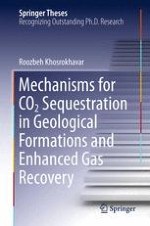2016 | OriginalPaper | Chapter
4. Sorption of CH4 and CO2 on Belgium Carboniferous Shale Using a Manometric Set-up
Author : Roozbeh Khosrokhavar
Published in: Mechanisms for CO2 Sequestration in Geological Formations and Enhanced Gas Recovery
Publisher: Springer International Publishing
Activate our intelligent search to find suitable subject content or patents.
Select sections of text to find matching patents with Artificial Intelligence. powered by
Select sections of text to find additional relevant content using AI-assisted search. powered by
